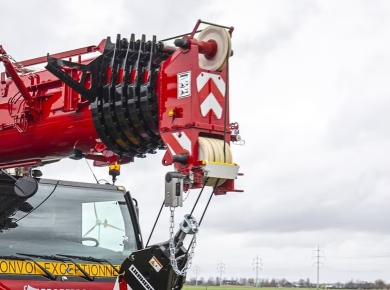Every construction site, factory floor, or office building poses unique risks when it comes to fire safety. Yet, amidst the hustle of daily operations, the critical task of fire extinguisher inspections often slips through the cracks. It’s easy to overlook this essential safety measure, especially when schedules are tight and deadlines loom. However, neglecting regular inspections can lead to devastating consequences—both for personnel and property. Having witnessed the aftermath of a fire that could have been contained with properly maintained equipment, I can confidently say that a proactive approach to fire extinguisher inspections is not just a regulatory requirement; it’s a moral obligation.
The Importance of Regular Inspections
Understanding the importance of inspecting fire extinguishers regularly cannot be overstated. These devices are often the first line of defense against fire outbreaks, and their effectiveness directly hinges on their maintenance. Fire extinguishers can lose pressure, become damaged, or expire, rendering them useless when they’re needed most.
When I first entered the field, I was part of a team that managed a large commercial construction project. One day, we experienced a minor electrical fire in a storage area. Fortunately, we had a fully charged, recently inspected fire extinguisher nearby. Quick action from the site supervisor helped contain the fire before it spread, sparing us from what could have been a catastrophic situation. It was a powerful reminder of why we must prioritize inspections.
Regulatory Compliance
Regulatory bodies outline specific requirements for fire extinguisher inspections, and compliance is not optional. Regular inspections ensure that your organization adheres to local fire codes, reducing the risk of legal penalties and increasing the safety of your workplace. For example, the National Fire Protection Association (NFPA) mandates that portable fire extinguishers be inspected monthly. Implementing a checklist for these monthly inspections can help ensure that nothing is overlooked.
Creating Your Fire Extinguisher Inspection Checklist
A thorough inspection checklist is essential for ensuring compliance and safety. Here’s a streamlined approach to creating your own checklist, based on both regulatory standards and practical experience.
Visual Inspection
Start by examining the physical condition of the extinguisher. Check for:
– **Physical Damage**: Look for dents, rust, or corrosion.
– **Pressure Gauge**: Ensure the needle is in the green zone, indicating adequate pressure.
– **Nozzle and Hose**: Inspect for blockages or cracks.
These simple checks can often be done in a matter of minutes, yet they are crucial for identifying potential problems before they escalate.
Tagging and Documentation
Each fire extinguisher should have a tag indicating the last inspection date. If you find that the extinguisher hasn’t been inspected in the last month, it’s time to address this oversight immediately. Keeping accurate records not only aids compliance but also helps track any patterns that may indicate systemic issues with your fire safety equipment.
Recharge and Maintenance Schedule
For extinguishers that have been used, proper recharging is vital. Follow the manufacturer’s guidelines for recharging and maintenance, and don’t forget to schedule routine professional inspections at least once a year. In my experience, partnering with a reputable fire safety company can streamline this process. They often offer service contracts that include inspections, which can save time and ensure consistency.
Training Your Team
Even the most well-maintained fire extinguishers are useless if your team doesn’t know how to use them. Regular training sessions on fire safety protocols and the proper use of extinguishers should be a standard practice.
Hands-On Practice
Incorporating hands-on practice into training can significantly enhance knowledge retention. During safety meetings, conduct drills that allow team members to practice using extinguishers in a controlled environment. This not only builds confidence but also reinforces the importance of regular inspections.
Staying Ahead of Common Challenges
Despite your best efforts, challenges can still arise. Perhaps your site experiences frequent changes in personnel or fluctuating workloads. In these situations, maintaining a consistent inspection schedule can be daunting.
Utilizing Technology
Leveraging technology can help mitigate these challenges. Consider using software solutions that send reminders for inspections and allow you to document findings digitally. This can streamline the process and make it easier to keep everyone accountable.
Another effective strategy is to assign a fire safety champion within each team. This person can oversee inspections and training, ensuring that fire safety remains a priority even in the busiest of times.
Conclusion: Make Fire Safety a Priority
Fire extinguisher inspections may seem like a mundane task in the grand scheme of safety management, but they are crucial in protecting lives and property. By committing to regular inspections, creating comprehensive checklists, training your team, and utilizing technology, you can ensure that your fire safety protocols are not just checked off a list but ingrained in your workplace culture.
Remember, the cost of neglecting fire safety can be immeasurable. Take proactive steps today—your future self and your colleagues will thank you for it.


